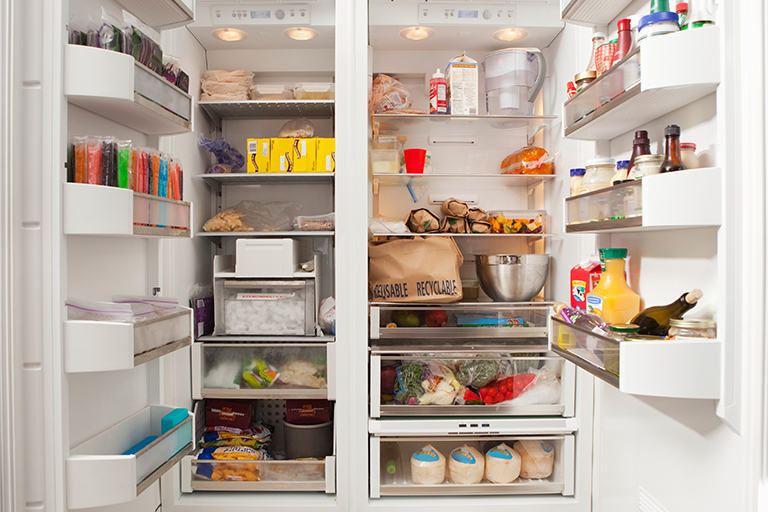By Pat Keegan and Brad Thiessen
Your energy use varies month to month, so it can be difficult to see how much difference an appliance purchase makes. It’s best to view the purchase over the lifetime of the equipment. Think about the up-front cost and the lifetime energy cost. In a Consumer Reports test, the most efficient refrigerator used $68/year less electricity than the least efficient model. Multiply that difference over a decade or two, and the lifetime energy savings could be greater than the up-front cost. All it takes to get the best appliance for your needs is some initial research.
Appliance energy use is usually less, on average, than home heating and cooling bills, but can be several hundred dollars each year. Your appliance use depends on factors like the model, how often you use it, the settings you use for its particular function and the time of day it is most used.
Over the last few decades, new appliances became more energy efficient, driven partly by minimum government standards. These standards, created by the U.S. Department of Energy, save consumers over $60 billion each year, the DOE reports. Appliances are required to include an Energy Guide label that shows estimated energy use and operating cost per year. These labels help you compare different models and calculate the initial cost against the long-term savings.
Some appliances will also have an ENERGY STAR label. This indicates the appliance is substantially more efficient than the minimum standard. Your greatest energy savings opportunities can come from replacing an old appliance with an ENERGY STAR-rated appliance. Removing a refrigerator that’s 20 years old and replacing it with a new ENERGY STAR model can lower the monthly electricity cost by 75 percent, from $16.50 to less than $4, according to Silicon Valley Power.
In some cases, the configuration of the appliance can also make a substantial difference. For example, a side-by-side refrigerator/freezer uses about 70 percent more energy than other configurations, with all the most efficient models having the refrigerator stacked on top of the freezer, according to ENERGY STAR. All 36 of the most efficient clothes washers of 2018 were frontloading models, the government-backed consumer-information organization states.
Consider how much you use the appliance. The more you use the appliance the greater your savings will be from choosing a more efficient model. If you use the appliance less or have a small household, you may get by with a smaller refrigerator or freezer, which will save you money.
How you operate appliances can also make a difference. ENERGY STAR offers these easy ways to save:
- Refrigerator/Freezer:
- Set your refrigerator at 35 to 38 degrees and your freezer at 0 degrees.
- Make sure there is adequate air flow between the wall and the back of the unit.
- Keep the refrigerator relatively full when possible.
- Replace the seals around the doors if they appear to be leaking air.
- Defrost the refrigerator and freezer regularly.
- Stove/Oven
- Use the correct size of burner to fit the pan.
- Use smaller appliances like a microwave or slow cooker instead of the oven when possible.
- Dishwasher
- Use the most energy-efficient and shortest setting that gets your dishes clean.
- Air dry rather than using the heated dry function.
- Wait to run a load until the dishwasher is full.
Make the most out of your appliance energy use with a little research before buying a new model and a few easy adjustments to the way you use them.
This column was co-written by Pat Keegan and Brad Thiessen of Collaborative Efficiency.

